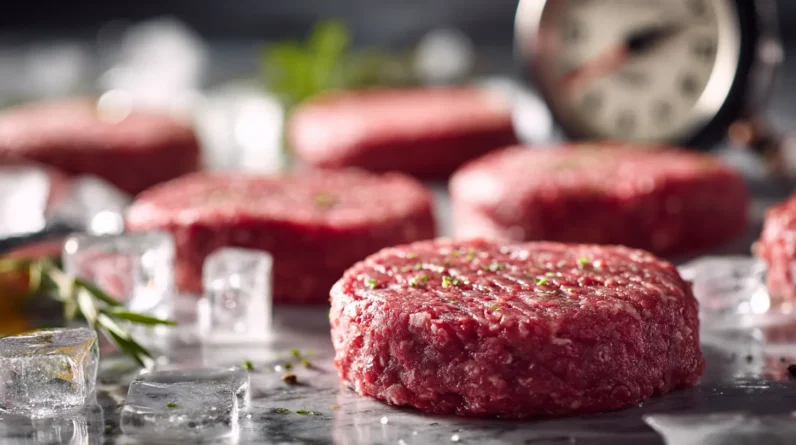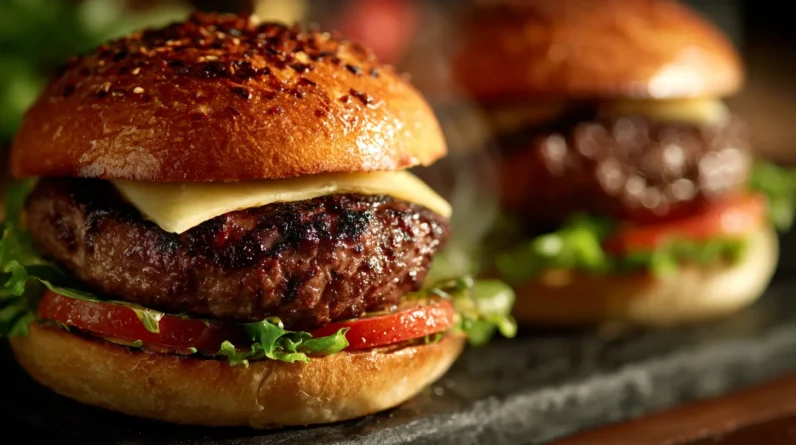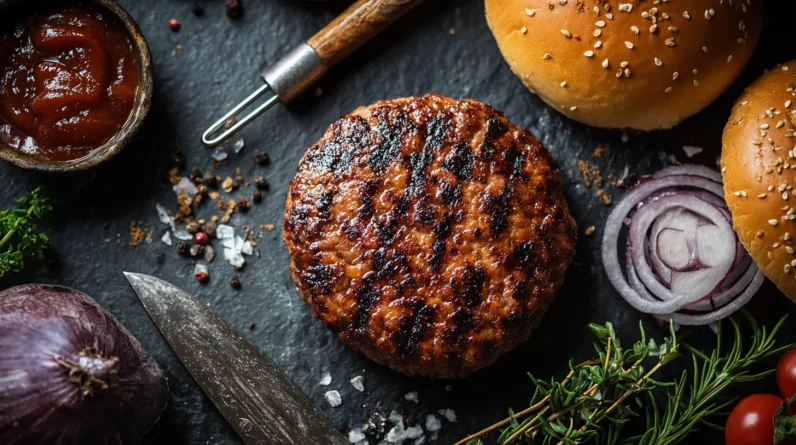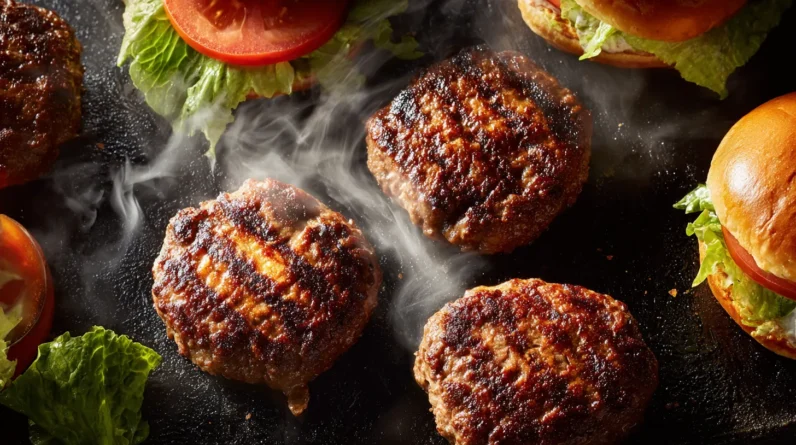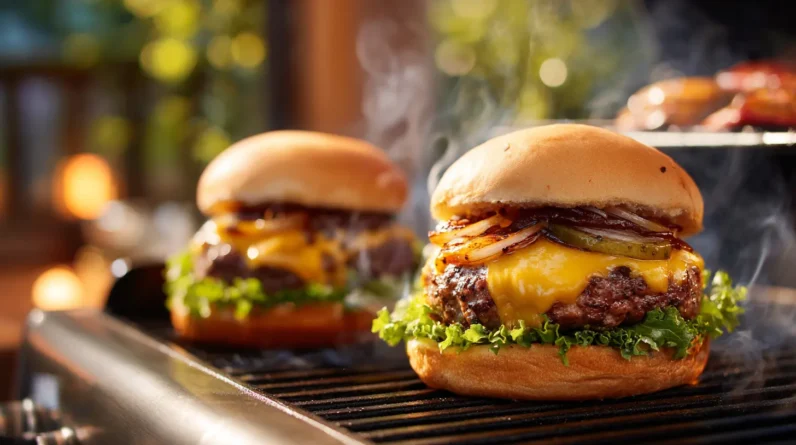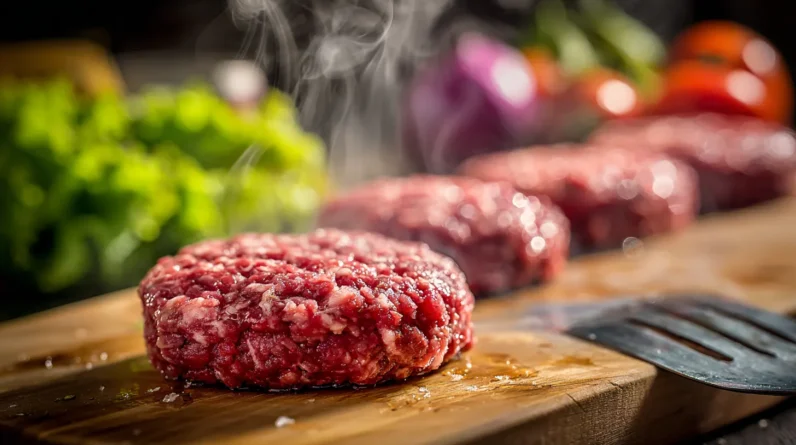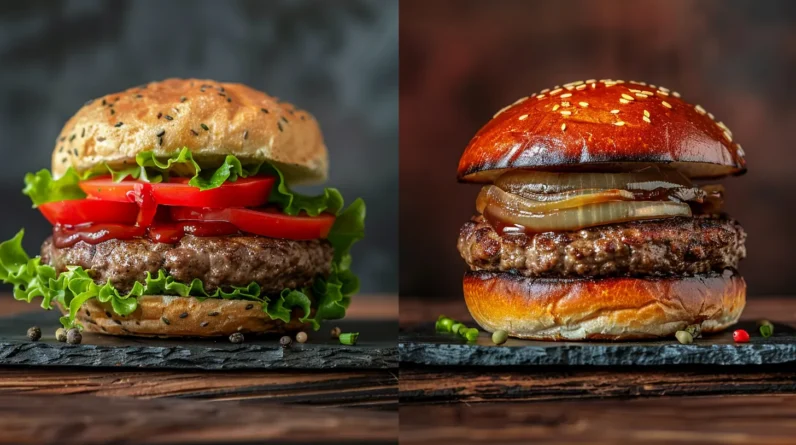
We’ve found that choosing the right ground beef fat ratio doesn’t mean sacrificing flavor for health—it’s about strategic selection. An 85/15 blend delivers rich taste with moderate calories (215 per 4-ounce serving), while 90/10 maximizes protein density without excessive dryness. Fat carries flavor compounds and enables the Maillard reaction that creates savory depth, but proper cooking techniques and umami-rich seasonings can enhance lean beef’s natural taste. Understanding these ratios helps you align nutritional goals with culinary expectations.
Understanding Ground Beef Fat Ratios and What They Mean
Ground beef’s fat ratio directly impacts your burger’s flavor, texture, and nutritional profile. We’ll decode the percentage labels you see at the butcher counter. The 80/20 ratio means 80% lean meat and 20% fat, delivering juiciness but higher calories. An 85/15 blend offers moderate fat content with decent flavor retention. The 90/10 option provides leaner nutrition while sacrificing some moisture. For 93/7 or 95/5 ratios, you’re choosing maximum protein density but risking dry burgers without careful cooking techniques. Understanding these ratios helps us make informed decisions whether we’re selecting traditional ground beef or exploring beef alternatives. Sustainable cattle farming practices increasingly influence these products’ availability and quality in today’s market.
The Science Behind Fat Content and Burger Flavor Development
When fat renders during cooking, it creates the foundational chemistry that transforms ground beef into a flavorful burger. We’re witnessing the Maillard reaction as proteins and sugars interact with rendered fat at high temperatures, producing complex compounds that deliver deep, savory notes. This beef chemistry generates hundreds of volatile compounds responsible for the characteristic umami richness we associate with quality burgers.
Fat acts as a flavor carrier, dissolving fat-soluble compounds and distributing them throughout the meat. Higher fat content doesn’t just add moisture—it amplifies existing flavor profiles while creating new ones through thermal breakdown. The intramuscular fat melts at different temperatures than surface fat, creating layers of flavor development. We’ll find that 20% fat content typically provides ideal flavor chemistry without overwhelming the beef’s natural taste characteristics.
Nutritional Breakdown: Comparing Lean Vs Higher Fat Ground Beef
While flavor chemistry drives our burger preferences, the nutritional profiles between lean and higher-fat ground beef create stark differences that impact our dietary goals. We’ll examine these contrasts to optimize our meat quality selections.
An 85/15 lean blend delivers approximately 215 calories per 4-ounce serving, containing 13 grams of fat and 25 grams of protein. Conversely, 70/30 ground beef provides 287 calories with 23 grams of fat and 20 grams of protein for identical portions.
The nutritional value extends beyond macronutrients. Leaner cuts concentrate more iron, zinc, and B-vitamins per calorie, while fattier options increase saturated fat intake substantially. We can strategically balance these factors by choosing 80/20 blends, which offer moderate fat content while maintaining essential nutrients and acceptable flavor development.
Cooking Techniques to Maximize Flavor in Lean Ground Beef
Lean ground beef’s lower fat content requires specific cooking methods to compensate for reduced natural moisture and flavor compounds. We’ll maximize flavor through strategic temperature control and timing.
Grill methods excel when we use medium heat (350-375°F) and avoid pressing patties, which expels precious juices. Pan searing works best with minimal oil in a preheated cast-iron skillet.
| Technique | Temperature | Key Benefit |
|---|---|---|
| Grilling | 350-375°F | Smoky flavor retention |
| Pan Searing | Medium-high | Maillard reaction development |
| Broiling | 500°F | Even browning |
We’ll enhance lean beef’s flavor profile by adding umami-rich ingredients like Worcestershire sauce or minced mushrooms during mixing. Salt the meat 40 minutes before cooking to improve moisture retention through osmosis.
Seasoning Strategies for Different Fat Content Levels
Since fat content directly influences how seasonings distribute and penetrate ground beef, we’ll adjust our approach based on the meat’s composition.
Lean Beef (90/10 or 93/7):
- Apply salt 40 minutes before cooking to enhance moisture retention and flavor penetration
- Use liquid-based marinade options like Worcestershire sauce, soy sauce, or beef broth to compensate for reduced fat
- Incorporate umami-rich spice blends featuring garlic powder, onion powder, and smoked paprika
- Add binding agents like egg or breadcrumbs with seasonings to prevent flavor loss during cooking
Higher Fat Content (80/20 or 85/15):
Fat naturally carries flavors throughout the meat, so we’ll use bolder spice blends and reduce liquid marinades. Season immediately before cooking since fat doesn’t require the extended penetration time that lean beef needs.
How to Prevent Lean Burgers From Drying Out During Cooking
Although lean ground beef offers nutritional advantages with reduced saturated fat and fewer calories per serving, its lower fat content creates cooking challenges that require specific techniques to maintain juiciness.
These burger tips focus on moisture retention through strategic cooking methods:
| Technique | Temperature | Time |
|---|---|---|
| Pan-searing | Medium heat | 4-5 min/side |
| Grilling | Medium-low | 5-6 min/side |
| Broiling | 4 inches from heat | 3-4 min/side |
| Sous vide | 130°F | 1-2 hours |
| Steaming | Covered pan | 6-7 min/side |
We’ll avoid pressing patties during cooking, which expels precious juices. Instead, we’ll create a slight dimple in each patty’s center to prevent puffing and guarantee even cooking. Adding a tablespoon of cold butter or olive oil to the lean meat mixture before forming patties provides additional fat for moisture retention.
Selecting the Right Fat Ratio for Your Dietary Goals and Taste Preferences
The fat content in ground beef directly impacts both nutritional value and flavor intensity, making the selection process crucial for meeting specific health objectives while satisfying taste preferences. We must evaluate beef options systematically to optimize our meat choices for desired outcomes.
- 85/15 ratio: Delivers rich flavor with moderate fat content, ideal for balanced nutrition without excessive calories
- 90/10 ratio: Provides lean protein while maintaining sufficient fat for moisture retention and taste satisfaction
- 93/7 ratio: Maximizes protein density with minimal fat, perfect for strict dietary protocols requiring low-fat intake
- 80/20 ratio: Offers maximum flavor intensity through higher fat content, suitable when taste takes priority over lean nutrition
Strategic selection aligns nutritional requirements with culinary expectations, ensuring we don’t sacrifice health goals for flavor or vice versa.
Conclusion
We’ve discovered that the “healthy” choice isn’t always what it seems—those lean 93/7 patties we thought were virtuous can turn into cardboard discs faster than we can say “well-done.” Meanwhile, the “indulgent” 80/20 blend we’ve been avoiding actually provides essential fats our bodies need while delivering the juiciness that makes burgers worth eating. The real irony? Moderation with higher-fat beef often beats overcompensating with multiple dry, lean patties.


